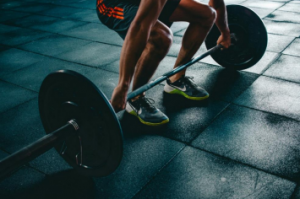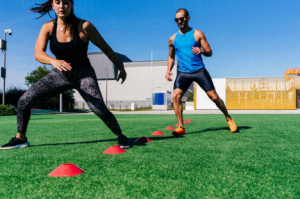As the new sport season approaches, fitness enthusiasts at all levels are gearing up to begin their best season yet, both on-field and in the gym. Whether you’re just beginning or are a well-experienced athlete, your performance and injury risk can be improved by incorporating a well-rounded strength and conditioning program. Read below to learn more about the importance of this for those at different levels of fitness and grab some simple tips to help you get your active year rolling!
The Basics
Strength and conditioning are the foundations for athlete preparation, building a comprehensive approach to your training. The main aims of this are to improve all aspects of athletic performance – strength, endurance, flexibility, and injury prevention. We want to see your body ready for the demands of your training and sport season.

Tailoring Workouts to Your Fitness Level
All Levels
All fitness levels should understand the key general strength and conditioning principles:
• Individuality & Specificity – everyone is unique and responds differently to
exercise. Training needs to be specific to your goals.
• Overload & Progression – adaptations are made by stressing the body and
increasing stimulus.
• Recovery – rest and recovery allow for better progression.
• Reversibility – use it or lose it! If you stop exercising, your gains can reverse.
Beginner
If you’re new to fitness and exercise, start simple with body weight exercises – squats,
lunges, push-ups and planks. These can help build a strong foundation to grow from,
aiming to slowly introduce resistance bands or light weights. Technique is key at this
level!
Intermediate
If you have previous fitness experience, you can mix it up with both body weight and
heavier resistances. This includes more complex compound exercises such as deadlifts.
Running and cycling are also good inclusions to build cardiovascular endurance. We
want to keep making progress – make sure resistance and intensity are gradually
increasing!
Advanced
If you’ve been involved in exercise and fitness for a while or are a seasoned athlete, you
should now be addressing specific weaknesses. We want to include more advanced
movements in your training – plyometrics, agility drills, and sport specific movements.
These need to mimic the demands of your sport or activity.

Key Components of a Strength and Conditioning Program
Warm-Up – Prepare the body for the exercise session or sport – include low intensity
movements, progressing to sport specific and more intense movements.
Strength Training – Major muscle groups should be targeted, with either isolated or
compound movements, and including both lower and upper body exercises. Aim for 2-3
sessions a week, with 2 days rest between sessions of each muscle group.
Cardiovascular Conditioning – Endurance can be improved by undertaking
cardiovascular exercises such as swimming, running, cycling or HIIT. Aim for 150
minutes a week of moderate intensity cardio exercise.
Speed and Agility Training – This is very sport specific – not all types of
exercise/training will include this, but if your sport involves sprinting and direction
change, then it should be included at more progressed levels of training.
Flexibility and Mobility – Improve joint range of motion through stretches, foam rolling
and exercises like yoga. This can also reduce your risk of injury. Aim to include this in
your warm-up or cool down.
Nutrition and Hydration – Keeping hydrated, having a balanced diet and adequate
sleep help to support your training. Including these can also aid your recovery. This can
be further discussed with a dietitian or nutritionist and your doctor.

How can we help
At Watsonia Physiotherapy, we can provide advice on the ideal program for you. By
addressing your training concerns and goals, and tailoring the program to your specific
level, we can help you achieve peak performance and minimise injury risk. But the most
important thing in planning and training is YOU – your dedication and consistency will
help you reach your full potential.
Get in contact with us to begin your sports season at your best!
References
1. American College of Sports Medicine. (2018). ACSM’s Guidelines for Exercise Testing and Prescription. Wolters Kluwer.
2. National Strength and Conditioning Association. (2012). NSCA’s Basics of Strength and Conditioning Manual. https://www.nsca.com/contentassets/116c55d64e1343d2b264e05aaf158a91/basics_of_strength_and_conditioning_manual.pdf
